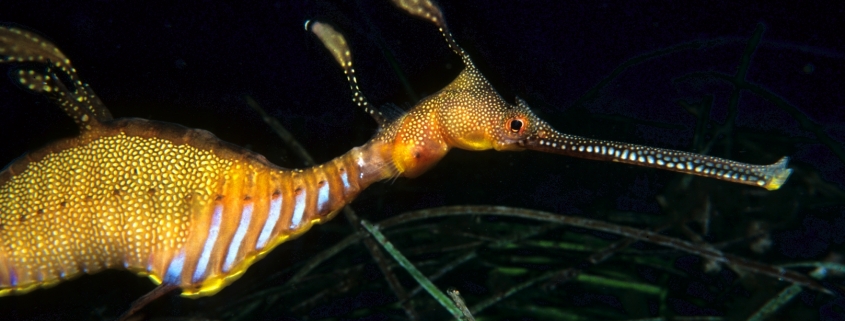Studying the elusive syngnathids of the Sound
Dozens of Perth divers and keen underwater photographers are helping research into the seahorses and pipefishes of Cockburn Sound and Owen Anchorage as part of a project which will also see water-borne DNA tested for evidence of the beautiful but elusive animals.
The project forms part of the WAMSI Westport Marine Science Program and Dr Glenn Moore, the Curator of Fishes at Western Australian Museum, is leading a research team looking into the diversity and distribution of syngnathids, a family of highly specialized and often cryptic fishes that also includes seadragons.
The fish have national protection under the Environmental Protection and Biodiversity Conservation Act of 1999.
“They are one of the most challenging groups of fish to survey,” Dr Moore said.
“We can’t run fine nets over the reef because they get caught up and the fish are difficult to spot diving, so we are using multiple methods including looking at historical records.”
“We are using as many data sources as we can to try and compile as much information as possible about the syngnathids in the Sound.”
Dr Moore said citizen scientists had so far uploaded more than 1,000 images to an online portal along with the location where the fish were spotted.
He said one limitation of citizen scientists was they tended to head towards common dive areas where seahorses were well known but the information was still valuable.
Environmental DNA testing will also start soon on water collected from Cockburn Sound to add to information about their distribution.
“We have done some water sampling and we will do eDNA work in the next few months.
“We have frozen water samples and these will be analysed at a specialist laboratory at Curtin University.
“We are hoping we can start to build a picture of their distribution and habitat preferences,” Dr Moore said.
He said part of the eDNA work involved building a DNA library.
“You need to have something to match the eDNA to when we are doing the analyses.
“We need to get DNA from specimens we are looking for and that is a challenge because we don’t get to collect all the species we know are there.”
Dr Moore said most syngnathids lived in shallow coastal waters and were especially reliant on habitats well represented in Cockburn Sound, including seagrass, filter-feeder communities, shallow detritus, reefs and artificial structures.
He said the distribution, habitat preferences and abundance, particularly of seahorses and pipefish, wasn’t well known but the research aimed to find out more with the aim of improving their protection.
Photos: Western Australian Museum

